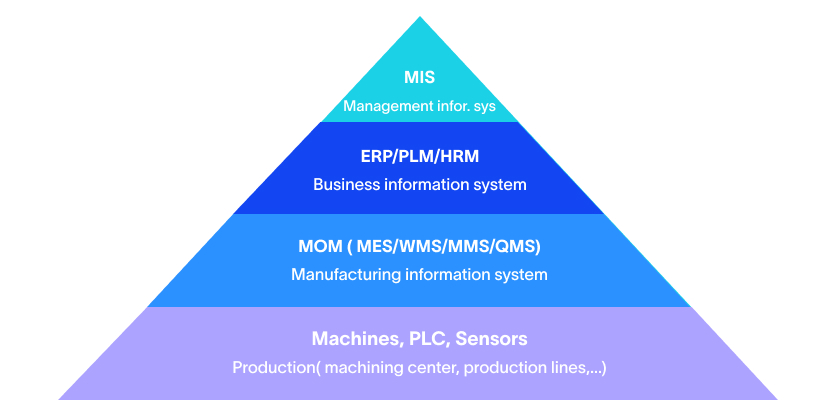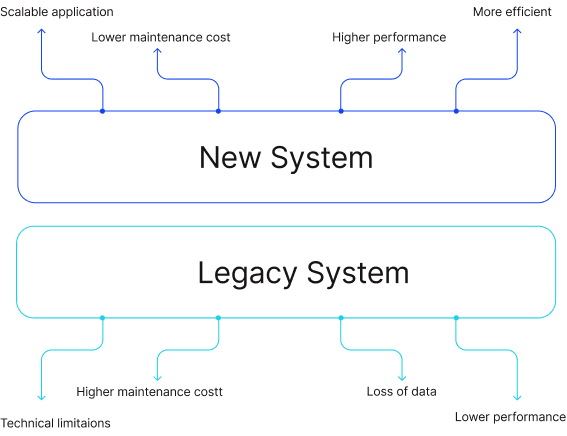GenAI in Manufacturing: Real Results
Blog
5 Min 01 Sec Read
With the popularization of GenAI tools like ChatGPT, Gemini, Copilot, Perplexity, etc., digital transformation has become faster in the age of Industry 4.0. However, when it comes to the impact of GenAI in manufacturing, there have been major transformations.
At the outset, GenAI analyzes big datasets and then generates new insights from manufacturing intelligence. This way, it helps manufacturers make better decisions. As a result, it helps to improve efficiency and reduce downtime. Moreover, it led to increased innovation, facilitated by data analysis and automation.
Hence, as a manufacturer, you might want to be a part of this transformation. That is why the biggest question is not whether you want to adopt AI. Rather, it is about how to implement GenAI into your business processes so as to maximize ROI.
You’re not alone. Unplanned equipment downtime costs industrial manufacturers over $50 billion annually, according to recent industry studies. But here’s what’s really frustrating – most of these failures could have been prevented with the right technology watching your systems.
The traditional approach to equipment monitoring is beyond what efficient equipment monitoring practices look like. It’s like driving with your eyes blindfolded. You only rely on the sound of the engine to know if everything is operating smoothly or not.
That’s where AI SCADA becomes essential in today’s fast-paced environment.
GenAI in Manufacturing: How Does It Help?
When it comes to manufacturing, the biggest question is whether it is possible to turn manufacturing data into business value. Well, it is possible with the right implementation of GenAI.
The manufacturing landscape is experiencing a revolutionary shift. Recent research reveals that Generative AI (GenAI) models like GANs can improve defect detection accuracy by 20-30% and reduce product development cycle times by 15%, while increasing production efficiency by 10%.
Generative AI encompasses AI systems capable of generating texts, images, or other media forms through generative models that learn patterns and structures from training data to produce new data with similar characteristics. But what does this mean for your manufacturing operation?
The technology addresses critical manufacturing challenges that have plagued the industry for decades:
Data Scarcity and Quality Issues
Traditional AI implementations in manufacturing often struggle with insufficient training data. For instance, GenAI models, like Generative Adversarial Networks (GANs), generate synthetic images.
These images mimic lighting conditions, defects, and orientations. Thereby, they accelerate the production of large datasets for training machine learning models.
In these cases, GenAI analyzes equipment data to predict malfunctions. Then, it suggests maintenance plans. Hence, the management will be able to minimize unplanned downtime.
Predictive Maintenance Breakthroughs
VAEs in manufacturing achieve up to 90% accuracy in predicting equipment failures, resulting in a 25% reduction in unplanned downtime. This isn’t just maintenance—it’s a strategic operational advantage.
Supply Chain Optimization
Transformer-based models improve demand forecasting accuracy by 35% and reduce material waste by 20% through optimized process parameters.
Basically, GenAI works with dynamic management to improve supply chain resilience. It does so by optimizing warehousing and logistics. Moreover, it also helps to make better decisions by analyzing complex datasets. Apart from that, it identifies trends to inform decision makers to optimize supply chain operations.
Early Automation Systems
In general, industrial automation systems like SCADA help to acquire and control data. However, they do not have the capability to predict, reason, and adapt.
This is where GenAI steps in for SCADA modernization. It brings data insights from the data collected through SCADA systems. As a result, GenAI improves system capability and human judgment at the same time.
Challenges with Product Design
With the help of machine learning and CAD software, GenAI is able to develop innovative, functional, and aesthetically pleasing product designs. Also, the design cycle is short.
Moreover, GenAI also helps to configure customer products faster. It does so by analyzing data from earlier designs. This way, you will be able to develop specialized equipment for your manufacturing processes.
Production and Operational Issues
At the outset, GenAI helps in process optimization in the following manner:
- Automates complex tasks
- Develops optimized production schedules
- Improves resource utilization
- Helps to increase manufacturing productivity.
Apart from that, GenAI also handles repetitive and labor-intensive tasks. This way, you and your team will be able to focus more on the core aspects of production. Moreover, it will help you with strategic planning.
Issues with Customer Support
To improve customer experience, GenAI provides hyper-personalized recommendations. Also, it suggests “next best actions” to customers. Moreover, it also improves after-sales services by reducing the time to respond to customer issues.
Three Pillars of GenAI Manufacturing Excellence
The following are the three important pillars of GenAI manufacturing excellence:
Generative Adversarial Networks (GANs)
In general, GANs have wide applications in a variety of manufacturing processes. These include the following:
- Generating digital twins (virtual replicas).
- Generating photorealistic images for product design.
- Manufacturing process optimization.
The following are the major real-world impacts of GANs:
- Resource Optimization: They minimize the requirement for expensive and time-consuming data collection. These are common with large, heavy, or rare industrial assets.
- Bridging Simulation Gaps: In this case, GANs increase the realism of virtual scenes. Moreover, it improves the performance of robots trained in simulation.
- Privacy Protection: GANs also omit or replace confidential data. These include human faces or serial numbers (in real images).
Variational Autoencoders (VAEs)
Primarily, VAEs work with the help of variational inference. As a result, it learns from a probabilistic distribution over the latent space. Then, it generates new data samples that resemble the training data.
For manufacturing, this translates to unprecedented predictive capabilities for equipment failures and process optimization.
Transformer-Based Models
Transformer-based deep neural networks facilitate the automation of complex tasks involved in physics-based simulations, such as geometry building, meshing, and setting boundary conditions. By understanding and processing natural language input, these models can autonomously execute various steps of the simulation workflow.
How Does INS3 Help in Strategic AI Implementation?
At INS3, we understand that successful GenAI implementation requires more than cutting-edge technology—it demands strategic integration with your existing manufacturing infrastructure. Our 30+ years of manufacturing systems integration experience position us uniquely to deliver AI solutions that provide immediate business value.
Our AI-Ready Infrastructure Engineering Approach:
Complete Data Architecture Integration
We engineer seamless connections from machines → SCADA → MES → ERP, creating the unified data foundation essential for GenAI success. GenAI models require high-quality training data to produce accurate results. However, manufacturing data often lacks consistency, completeness, and relevance. Our Unified Namespace (UNS) architectures solve this challenge.
Cybersecurity-First Implementation
GenAI models require access to sensitive manufacturing data, which poses significant security risks. Our robust cybersecurity frameworks ensure your AI implementation enhances rather than compromises your operational security.
Phased Digital Transformation
We start with high-impact, low-risk pilots that demonstrate immediate value, then systematically expand with minimal operational disruption—exactly what manufacturers need for sustainable AI adoption.
Measurable Results: The INS3 Track Record
Our clients consistently achieve:
- 200-300% ROI within 18 months of implementation
- 20-50% reduction in unplanned downtime through predictive maintenance
- 10-30% improvement in product quality through AI-driven quality control
- 10-15% reduction in operational costs through comprehensive data analytics
Industry-Specific Applications
- Food & Beverage: Predictive quality monitoring, preventing defects before they impact production, optimizing ingredient usage through AI-driven least cost analysis.
- Chemical & Industrial: Process parameter optimization through transformer-based models, predictive maintenance, and reducing costly equipment failures.
- Pharmaceutical & Life Sciences: Automated compliance reporting and traceability systems, quality assurance through real-time monitoring.
- Energy & Power: Equipment failure prediction, energy optimization through intelligent process control.
Major Reasons Why You Must Implement GenAI in Manufacturing
According to industry experts, businesses can significantly enhance various aspects of the processes by properly implementing GenAI in manufacturing. In fact, it is possible to improve productivity by 20% by integrating GANs and Transformer-based systems. This is because they help to optimize and reduce errors in manufacturing through data.
The competitive advantage window is closing. Early adopters are already seeing measurable improvements in:
- Operational Efficiency: Optimized production scheduling and resource allocation
- Quality Enhancement: Statistical process control and automated quality systems
- Cost Reduction: Comprehensive data analytics identifying inefficiencies and enabling systematic cost savings
- Predictive Maintenance: Transition from reactive to predictive maintenance strategies
Transform Your Manufacturing Processes Now!
The question isn’t whether GenAI will transform manufacturing—it’s whether your organization will lead or follow this transformation. At INS3, we don’t just implement technology; we transform manufacturing data into sustainable competitive advantages.
So, are you ready to explore how GenAI revolutionizes your manufacturing operations?
Our proven methodology combines three decades of manufacturing expertise with cutting-edge AI implementation. We deliver solutions that demonstrate clear business value and measurable ROI from day one.
Contact INS3 today to discuss how our AI-ready infrastructure engineering can position your manufacturing operation for the GenAI revolution. Let’s transform your manufacturing data into your greatest competitive advantage.

Agile MES: The Key to Unlocking Smart Manufacturing Success
MES is a computerized system used in manufacturing operations to track and document the transformation of raw materials into finished goods. An MES system typically manages and monitors work orders, equipment, materials, and personnel on the shop floor. The system provides real-time visibility into production processes, helps optimize manufacturing operations, and improves the overall efficiency of the manufacturing process.

Understanding OEE: The Key to Manufacturing Efficiency
In today’s competitive manufacturing landscape, improving efficiency and productivity is crucial for businesses to remain competitive. One of the key metrics used to measure manufacturing efficiency is OEE or Overall Equipment Effectiveness. In this blog, we will take a closer look at OEE and its importance in manufacturing.

How to Effectively Conduct a Legacy System Integration
Legacy system integration can be a daunting task, but it’s a necessary one for many manufacturers that rely on outdated systems to run their business. Integrating legacy systems with modern technology can improve efficiency, streamline processes, and save time and money. However, it’s important to approach the integration process carefully and methodically to ensure success.
Share on :
Keep On Reading
Subscribe to Our Newsletter
Subscribe to our weekly newsletters to get updates regarding our new production, behind the scene process of our art creation and much more.
After submitting this form you will receive an e-mail with a confirmation link that you must click to complete your request. Detailed information on processing and cancellation can be found in our privacy policy.

